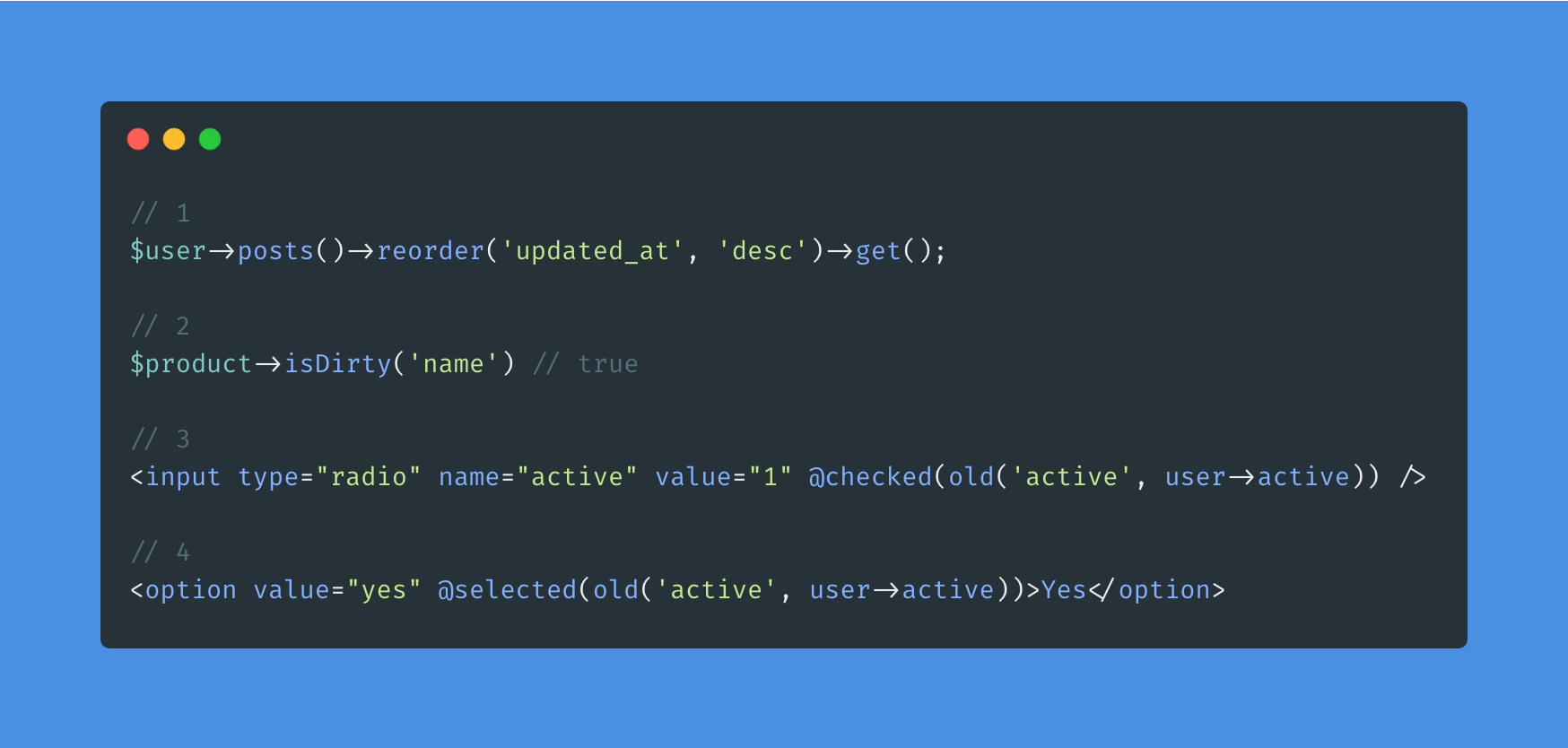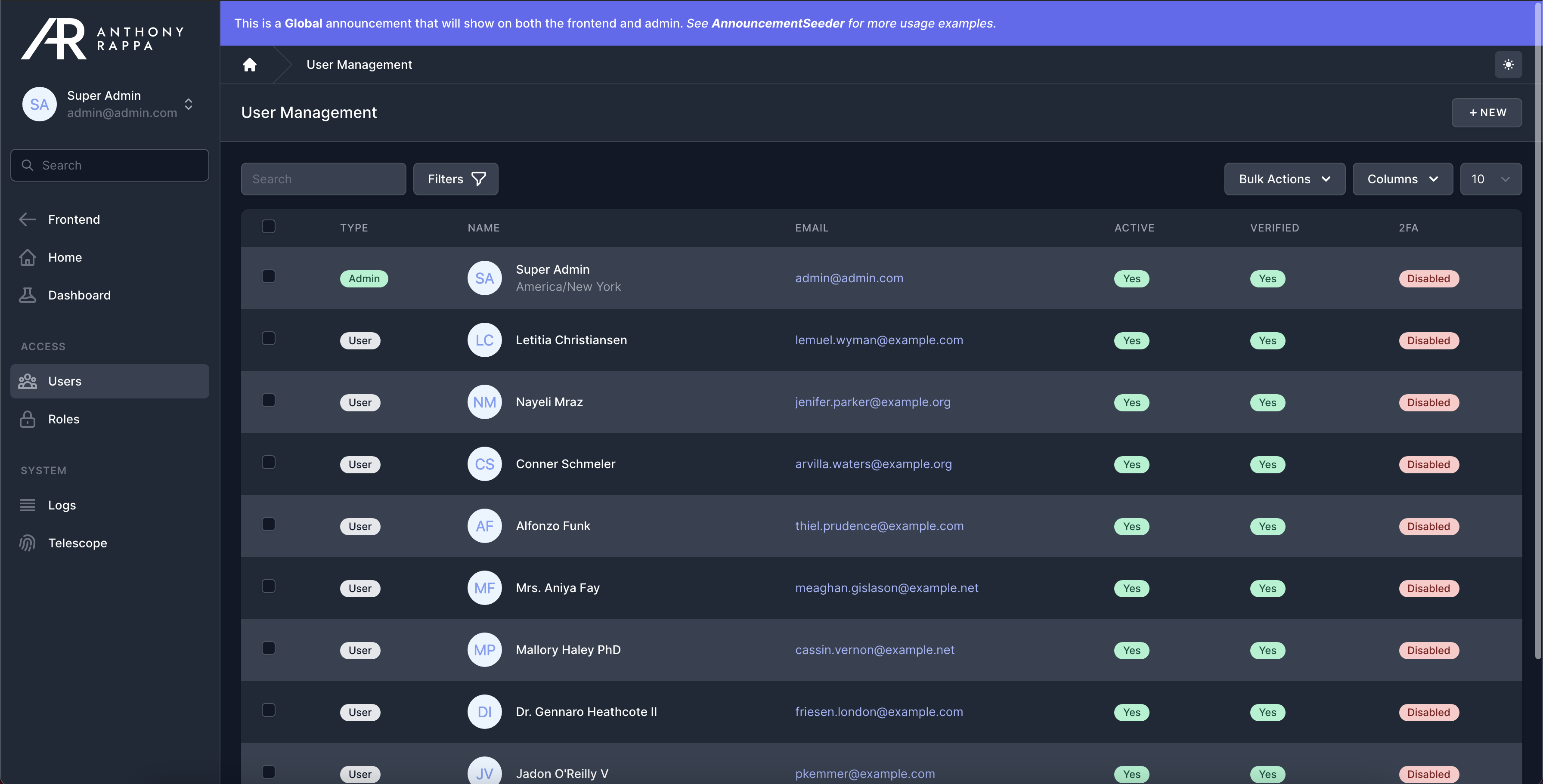Working with @blade $loops
Everyone knows about looping data in Blade files, but have you seen these lesser known features?
Everyone knows Blade files are part of the heart and soul of Laravel applications, but I feel like most people don't use them to their full potential.
There is much that could be discussed with the above statement, but for this article I'm going to focus on loops specifically.
This is how you declare regular no-frills loops in Blade:
1@for ($i = 0; $i < 10; $i++) 2 The current value is {{ $i }} 3@endfor 4 5@foreach ($users as $user) 6 <p>This is user {{ $user->id }}</p> 7@endforeach 8 9@while (true)10 <p>Looping forever.</p>11@endwhileDid you know about @forelse?
Instead of:
1@if($users->count())2 @foreach($users as $user)3 <p>{{ $user->name }}</p>4 @endforeach5@else6 <p>No users</p>7@endifUse:
1@forelse ($users as $user)2 <p>{{ $user->name }}</p>3@empty4 <p>No users</p>5@endforelseDid you know you can continue and break loops without needing the @php directive?
Instead of:
1@php2 continue;3@endphp4 5@php6 break;7@endphpUse:
1@continue2@breakYou can also give them conditions:
Instead of:
1@if ($user->isAdmin())2 @continue3@endif4 5@if ($user->isAdmin())6 @break7@endifUse:
1@continue($user->isAdmin())2@break($user->isAdmin())There is also an available $loop variable given to you inside all loops:
You can do things like, add a horizontal rule after all the elements except the last one:
1@foreach ($posts as $post)2 {{ $post->content }}3 4 @if (! $loop->last)5 <hr />6 @endif7@endforeachOr just the first one:
1@foreach ($posts as $post)2 @if ($loop->first)3 <p>This is my first post!</p>4 @endif5 6 {{ $post->content }}7@endforeachOr you can add numbers to things:
Instead of:
1@foreach ($posts as $index => $post)2 <p><strong>Post {{ $index + 1 }}</strong></p>3 4 {{ $post->content }}5@endforeachUse:
1@foreach ($posts as $post)2 <p><strong>Post {{ $loop->iteration }}</strong></p>3 4 {{ $post->content }}5@endforeachNote: $loop->iteration starts at 1, $loop->index starts at 0.
You can style a table based on if a row is even or odd:
1<tr class="{{ $loop->even ? 'bg-gray-400' : '' }}"></tr>2<tr class="{{ $loop->odd ? 'bg-gray-400' : '' }}"></tr>You can keep track of where you are in the loop:
1@foreach ($posts as $post)2 <p>There are {{ $loop->remaining }} items out of {{ $loop->count }} items.</p>3@endforeachYou can even keep track of depth:
1@foreach ($posts as $post)2 @foreach($post->comments as $comments)3 @foreach($comments->tags as $tag)4 <p>I am {{ $loop->depth }} levels deep.</p>5 @endforeach6 @endforeach7@endforeachLastly, you can get access to the parent loops:
1@foreach ($posts as $post) 2 @foreach($post->comments as $comment) 3 @foreach($comment->tags as $tag) 4 <p>{{ $loop->parent }} is the parent comment.</p> 5 <p>{{ $loop->parent->parent }} is the parent post.</p> 6 @endforeach 7 8 @if ($loop->parent->first) 9 <p>This is the first post and I am checking from the comments loop.</p>10 @endif11 @endforeach12@endforeach




